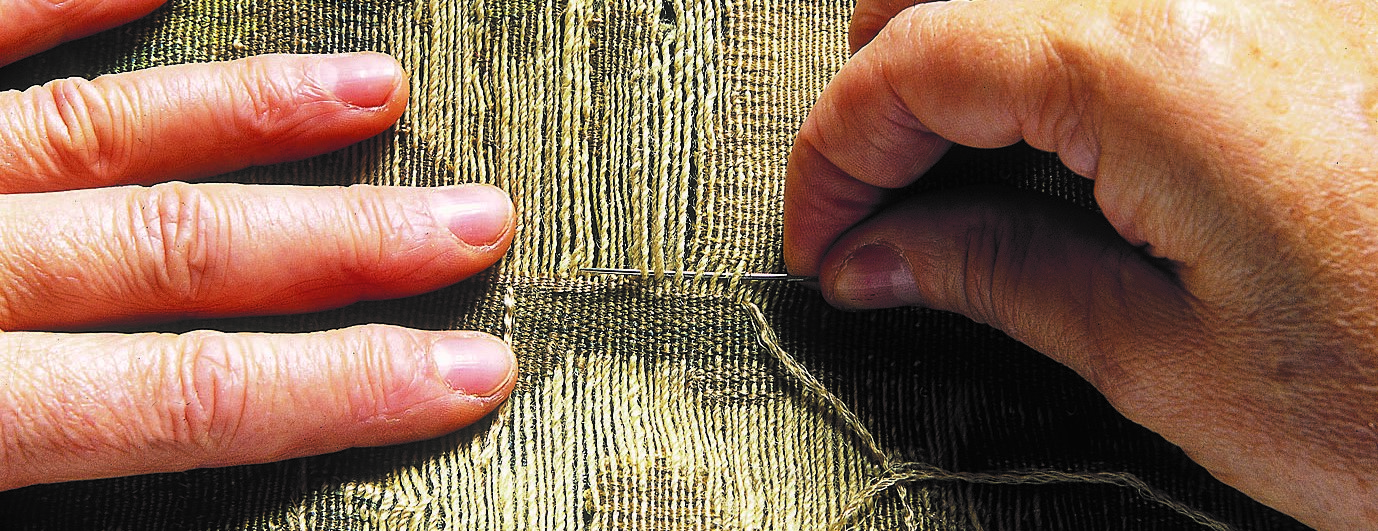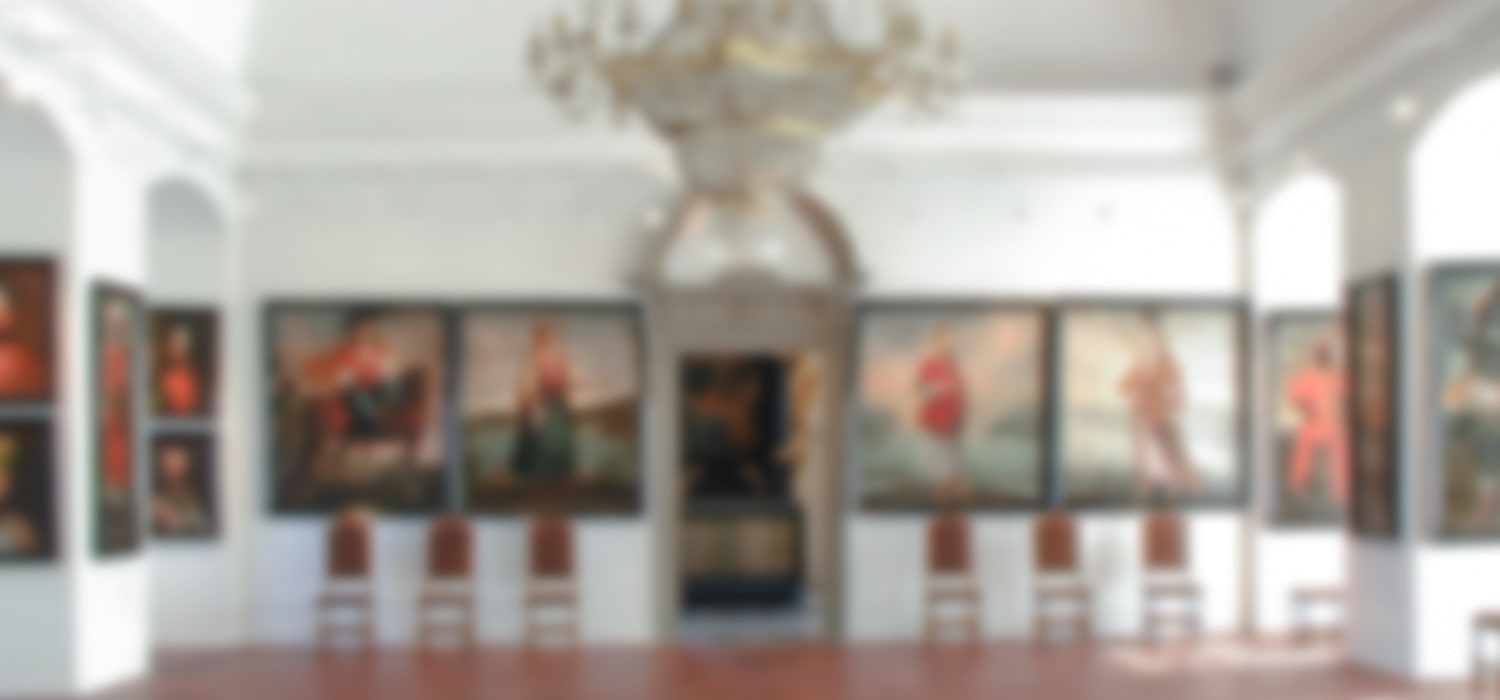FROM THE CREATION OF TAPESTRIES TO THEIR CONSERVATION
TAPESTRIES IN PTUJ CASTLE
Among many other exhibits, the Ptuj Ormož Regional Museum also maintains a collection of historical tapestries, which is of particular significance in Slovenia, as it comprises four Brussels tapestries with the story of Odysseus from the beginning of the 17th century, six so-called verdure tapestries from the middle of the 17th century, and two tapestries with figural scenes woven in Aubusson in the last quarter of the 17th century. The museum also keeps three Secession tapestries woven at the end of the 19th or beginning of the 20th century at the Carniolan Institute for Artistic Weaving in Ljubljana, and a set of tapestries from the second half of the 20th century. Under the direction of Etelka Tobolka (1919–1989), who was the first weaver in former Yugoslavia to study and combine old traditional weaving techniques with the artistic designs of contemporary national artists, these tapestries were woven at Atelier 61 in Novi Sad, where, among other works, tapestries were made after eight designs by Pregelj and five by Mihelič.
While the provenance of the two Baroque tapestries with figural scenes, woven in Aubusson in the last quarter of the 17th century and acquired by the Museum through a purchase, is not yet known, the ten Brussels tapestries from the early and mid-17th century are part of the estate of the Counts of Leslie, the owners of Ptuj Castle between 1656 and 1802. But the custom-woven tapestries, which depict stories from the life of Odysseus and pastoral scenes set in a magnificent landscape, were not made for Ptuj Castle. They were only transferred here in the time of Count Charles Cajetan Leslie, before 1761, from the Leslie Palace in Graz, as they were no longer fashionable at that time. The inventory of the estates of the aforementioned Counts shows that there were many more, 47 tapestries, in the Graz residence at the time of the 1692 inventory.
The delicate woven artworks were damaged and destroyed to such an extent over the course of a century and a half that, in 1900, the then owner of the castle, Count Johann Joseph Herberstein, sent fifteen tapestries – six with the story of the life of Odysseus and nine landscapes – to the Viennese atelier Lachmayer for restoration, but only ten came back after the restoration was completed. The four tapestries with the story of Odysseus and one of the Aubusson tapestries remaining in Ptuj have been subjected to extensive conservation and restoration work in the museum’s textile workshop again over the past four decades. But the work on the Baroque tapestries is far from finished. The museum’s conservator-restorers have already put the first of the six verdure tapestries on their looms. After many hours of work, the colourful artworks will shine again in all their beauty over the next few decades.
THE PANEL SHOWS THE STEP-BY-STEP PROCESS OF WEAVING A FLORAL MOTIF FROM THICKER WOOL AND SILK THREADS BASED ON A BAROQUE TAPESTRY, WHILE THE SMALL WALL-MOUNTED COUNTER DISPLAYS THE BASIC TOOLS FOR RESTORING TAPESTRIES.
TWO TAPESTRIES MADE IN AUBUSSON IN THE LAST QUARTER OF THE 17TH CENTURY ARE ON DISPLAY. THE TAPESTRY WITH THE GROUP OF FIGURES HAS BEEN RESTORED, WHILE THE TAPESTRY WITH THE COUPLE IN A LANDSCAPE HAS ONLY BEEN CONSERVED.

